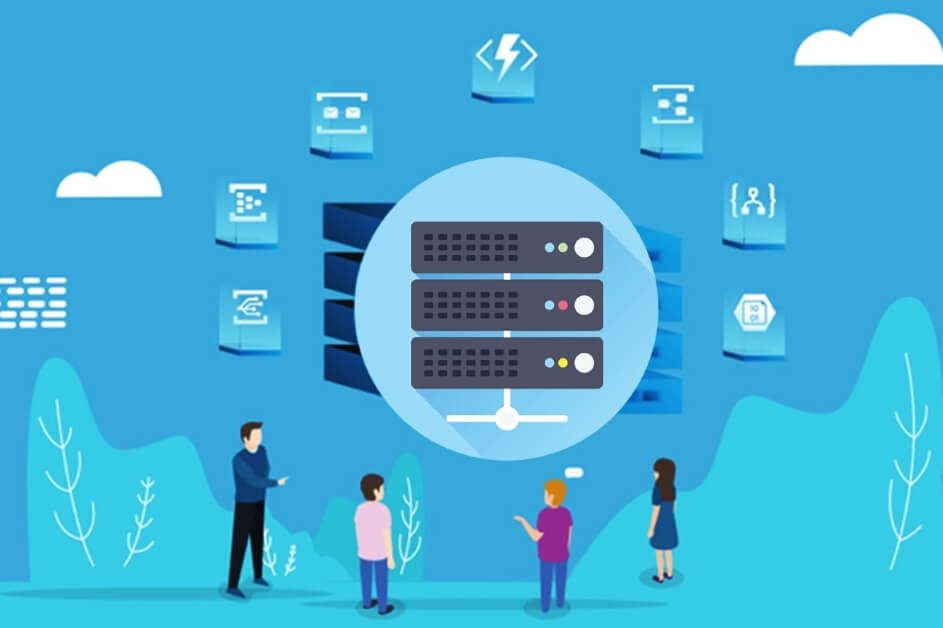
Application development is constantly on the lookout for new ways to make the development process efficient and its outcomes valuable to the end-user. One of those efforts is serverless architecture. When compared to traditional server-based architecture to serverless architecture, serverless application architecture is the buzzword that has been circulating in the cloud ecosystem for quite some time and offers numerous advantages. Those benefits include increased scalability, flexibility, faster time to market, and a more cost-effective software development model.
However, in order to get full advantage, you must first grasp what serverless computing is, how it works, and the advantages of serverless architecture. In this article, we’ll go over these and other aspects of the serverless architecture and cloud computing model.
Elements of serverless application architecture
FaaS Solutions: is one of the most important components of serverless computing architecture. These features allow developers to create, execute, deploy, and maintain apps without having to worry about server architecture.
SaaS solutions: Serverless users use the API offered by the providers to log into the system and access its numerous services. Serverless users use the API offered by the providers. This serverless architecture should be built to create a security token for each user before the API access is triggered.
Database solutions: even if the app is built and managed using serverless computing, the data it contains will need to be kept in a database. As a result, a strong database becomes an important aspect of architecture.
How does serverless architecture work?
Serverless cloud computing is used by developers to work on individual functions. As a result, the paradigm is commonly referred to as Functions as a Service (FaaS). In serverless computing, functions are written and executed in the following methods: The developers create a function. Within the app code, this function usually has a specific purpose.
The developers will then create an event. This event triggers the cloud service provider to do a task. In general, HTTP requests are the most prevalent form of event. The event is activated. If the event is an HTTP request, the user initiates it by clicking on it.
Relevant benefits of using a serverless architecture
There are several benefits to working with a cloud-based computing provider. Let’s have a look at them in this part.
Cost savings
Any software project’s key costs are human resources and architecture. With its pay-as-you-go paradigm, the serverless architecture allows for incredibly cheap architectural expenditures. Consider the following scenario: Your startup website has fewer than 1000 visitors. You can save up to 90% on backend resources and maintenance costs by switching to a pay-as-you-go approach.
Higher scalability
Serverless apps can scale up or down as the user’s usage increases or decreases. When a function has to be run on multiple instances, the servers start, run, and end as and when required with the help of containers.
Due to this, the serverless application is able to handle a large number of requests while making it seamless to proceed, even with a single request coming in from one user and ones coming in from thousands of users. This is why businesses tend to prioritize traffic and prefer serverless architecture for scalability.
Fast deployments and updates
When working on a serverless architecture, there is no need to upload code to the servers for any backend configuration needed to deploy an application version. The code can be rapidly uploaded and the latest version released.
This means that the team doesn’t have to keep track of whether or not the update has been rolled out across all devices. Every single one of your customers will be able to access a new business feature or technology as soon as you implement it.
Reduce latency.
Because serverless apps aren’t hosted on a central server, they can be run from anywhere. As a result, depending on the provider, running the app operations from servers closer to the end customers becomes equally easy.
This procedure reduces latency by avoiding the need for your users’ requests to travel to the origin server, reducing data transmission and processing time.
Easy operational management
Traditionally, latency systems have provided the architecture for the company’s software expansion. The reliance on legacy systems has hampered business disruption efforts.
By adopting serverless architecture, the only thing businesses have to think about is an innovation since all the architecture requirements are handled by the providers.
Final Thoughts
Serverless computing has the potential to eliminate the complexity associated with traditional cloud-based applications to make application development faster, more agile, and budget-friendly. With a serverless approach, your application still runs on servers, but all the server management is done by AWS and other providers. We will discuss more serverless architecture in our upcoming blog. Keep in touch to get more blogs on the latest technologies.







